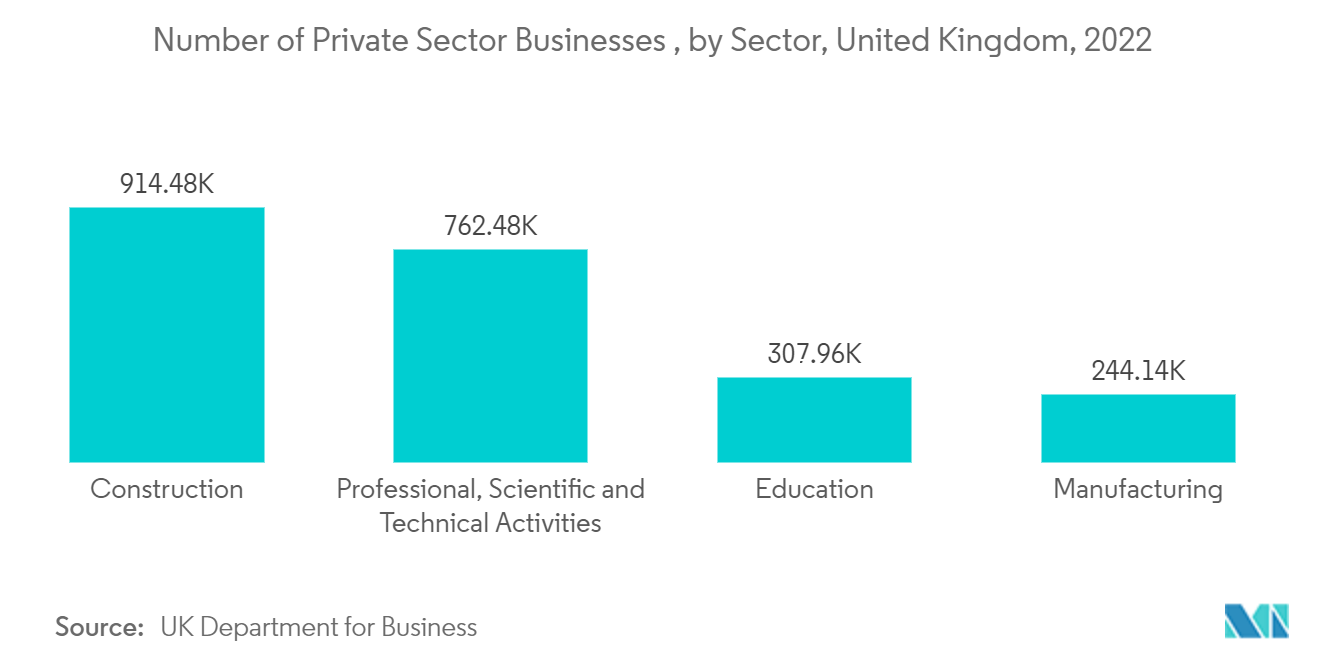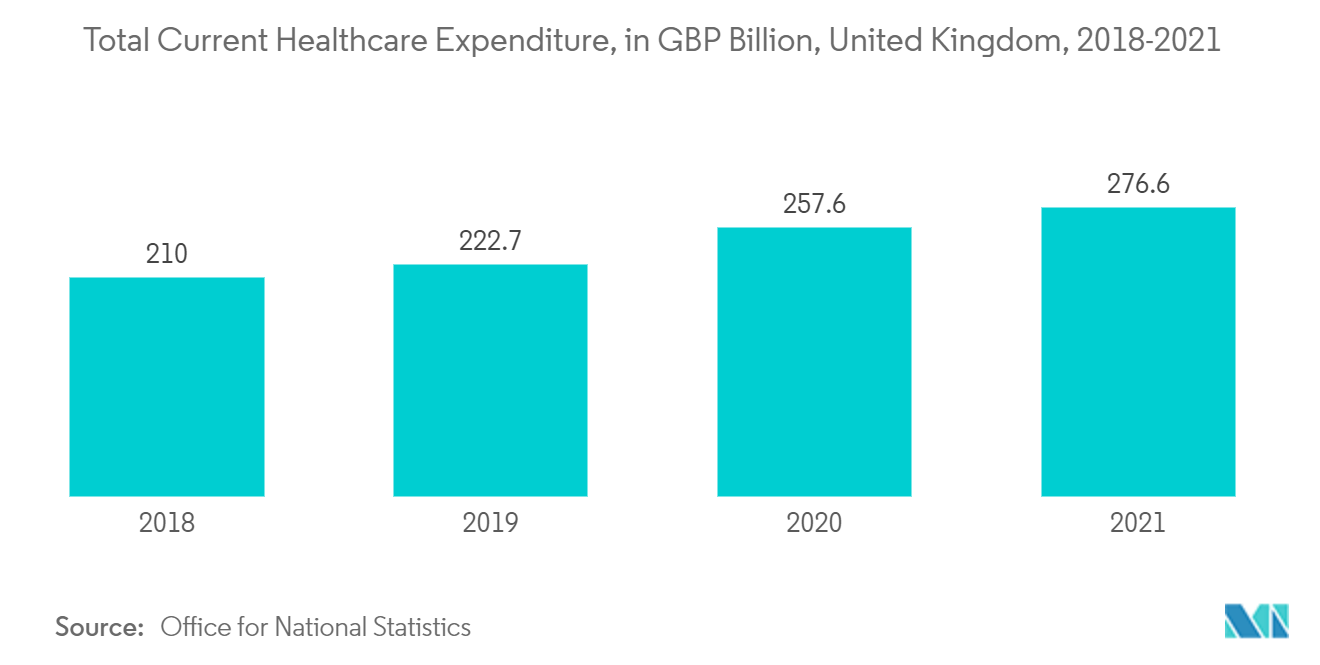Market Trends of United Kingdom 3D Printing Industry
This section covers the major market trends shaping the UK 3D Printing Market according to our research experts:
Growing Demand for Industrial-grade 3D Printers
- Industrial 3D printers are upending the long-established manufacturing industry in the United Kingdom, from jigs and fixtures to final tooling. Companies may now build specialized, low-volume equipment and fixtures for a fraction of the cost of traditional methods, freeing up designers' and engineers' time for more profitable projects. Large, international manufacturers can now get the same benefits from a professional 3D printer as small manufacturers in a mall. This helps to improve and speed up operations while cutting down on downtime.
- According to the UK Department for Business, in the last year, there were around 5.51 million private sector enterprises in the United Kingdom, with approximately 914,475 of them being construction businesses and 762,480 being professional, scientific, and technological businesses. Many companies would create an opportunity for industrial 3D printing players to develop new products to capture market share.
- The automobile industry has led the way in additive manufacturing, with renowned firms such as Audi using 3D printers. Not only are the Audis of the world using 3D printers, but race car teams and original equipment manufacturers from every automaker are also. The earliest application of 3D printing for vehicle manufacturers was to create fixtures and tools to aid manufacturing. The most common parts printed by the vehicle industry are fixtures, cradles, and prototypes. These products must be solid, durable, and long-lasting.
- Several properties, ranging from customizability to reduced weight, make excellent robotics parts and complement 3D printing capabilities nicely. It is costly to manufacture and requires specialized designs for components such as grippers and sensor mounts for diverse applications. Robotics professionals use 3D printers for end-of-arm tooling and end-use parts ranging from gripper fingers to whole robot components to reduce total product weight and enable tools to move faster and carry heavier loads.
- To meet the various demands of the customer, the firms are providing various industrial-grade 3D printers. For example, Stratasys provides the Fortus 450mc Industrial FDM 3D Printer, the F900 Industrial 3D Printer, and many more. Stratasys FDM 3D Printers have the highest accuracy, speed, and variety of thermoplastic materials.

Healthcare Industry will Experience Significant Growth in Forecast Period
- 3D printing applications are expanding rapidly in the medical sector and are expected to revolutionize health care. The medical industry uses 3D printing in several broad categories, including tissue and organ fabrication, customized prosthetics, implants, anatomical models, and pharmaceutical research related to drug dosage forms, delivery, and discovery. It provides several benefits, such as customization and personalization of medical products, drugs, and equipment, cost-effectiveness, and efficient productivity. According to the national statistics office, healthcare expenditure in the UK accounted for approximately USD 290 billion last year.
- The surging need for 3D-printed, personalized, and better-performing implants has fueled the collaboration of hospitals and organizations to offer 3D printers and training to health professionals to develop the devices. For example, Axial3, a medical manufacturing service provider, has partnered with Newcastle Hospitals in England to provide an on-site 3D printing lab that practitioners will primarily use in orthopedics and spinal surgery to print patient-specific models for presurgical planning.
- The design flexibility offered by 3D printing is driving the demand for 3D-printed implants with higher performance. Implants can be designed with porous surface structures, which facilitates faster integration between a living bone and the artificial implant. The 3DLifePrint has secured an investment of USD 1.2 million to expand its portfolio of embedded medical 3D printing hubs across hospitals and clinics and to recruit additional bio-medical engineers and 3D technologists to continue research and development.
- Increasing the application of 3D printing to produce modern prosthetics has decreased costs and surged its adaptation among users. The number of patients with an amputation or congenital limb deficiency attending specialist rehabilitation service centers in the United Kingdom is estimated to be around 60,000. The NHS in England spends about USD 60 million per year on rehabilitation services.This reveals the tremendous opportunity for the 3D printing market in the healthcare segment of the United Kingdom.
- Further, a team of researchers from the University of Bath and the University of Bristol leveraged ultrasound to develop a 3D bioprinting technique. The new approach superimposed several ultrasonic standing waves to generate controllable acoustic radiation forces that could direct airborne droplets to accumulate into precise pools, enabling unique biomaterial microarchitectures to be produced and modified rapidly.

